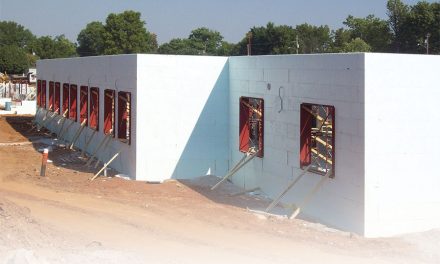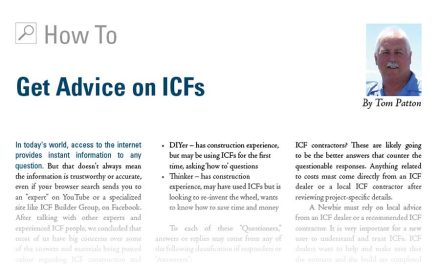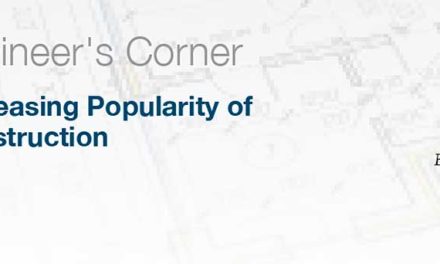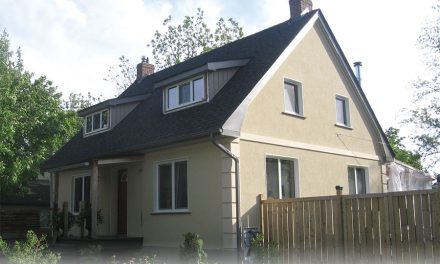By Tom Patton
Everyone is very conscious of and can see the influence of climate change, with the frequency of weather events creating havoc on our way of life and structures we live in and use. The incentives to build green, which were developed more than 10 years ago, are promoted to save on energy, natural resources, save water, and ultimately save money spent on energy usage. The residential design and construction sector was highlighted as being the best area to implement solutions for change. Code agencies developed stronger requirements for thermal resistance, continuous insulation, tighter air and moisture infiltration, and more efficient HVAC systems.
Also introduced was the new market of home inspectors and energy raters to evaluate, per specific standards, the finished product. This meant designers and contractors had to follow these new standards, no cutting corners because testing and inspections revealed every shortfall. The mantra “you make a hole, you seal the hole” became the norm on every job site, as air tightness testing spotted every flaw in the air barrier. Unfortunately, the standard for being “green” or “energy efficient” was marketed by the appliances to be Energy Star–rated, and not so much on the building’s wall assembly or thermal efficiency.
There are numerous paths to becoming environmentally responsible, some being minimalist, some being over the top. The “cradle to grave” philosophy and consideration of the “lifecycle” impact are major design considerations. Discussions on each can become very heated, with great points of view for each, but as for everyday, right now, what steps are available that can be used to help residential and commercial construction move forward to hit or address these goals?
The extreme weather events resulting in high winds, floods, quakes, fires, temperature changes, etc. all impact the life cycle of a building, and may result in instant destruction, or possibly structural damage, while others promote mold or rot. The key words in today’s market are sustainability and resiliency. The question is how to invest in creating a resilient and healthy environmentally conscious building for your client, family, or workplace.
ICFs provide a number of key features that address all of these elements of environmental responsibility. Each one is a selling point and consideration for designers, contractors, and the residents.
ICFs are a modular building material that are easily modified to fit any dimension in width or height. Cut blocks may be used in other areas of the wall. A single ICF block is typically made with more than 43% recycled material and the remnants from a project may be recycled. Reducing waste on a jobsite is a twofold advantage. Utilizing one building product that has the attributes to eliminate labor and materials within a wall assembly is a bonus.
A reinforced concrete structure provides the resiliency to withstand extreme weather events. The EPS insulation and the concrete walls will never rot, decay, or deteriorate over time, providing more lifecycle protection than other framing or structural systems. There is more attention in wood framing to shear walls and hurricane proofing the walls and roof assemblies. ICF design and construction provide a simple design and construction solution to this criterion.
Building science is playing a huge role in the development of wall assemblies, mainly to address issues caused by air and moisture infiltration. How to address the issues which lead to the development of condensation creating mold with the assembly and health concerns. Designers and contractors must now understand how to design and construct a wall assembly using multiple materials, sealants, and tapes. They must also specify how they all work together to maintain the airtightness that will not only pass a blower door test but be sustainable for years. An ICF wall assembly provides a barrier for air and vapor. The key here is that the attributes of ICF allow for the elimination of material and labor for these barriers and sealants. No additional materials or sealant are required (other than windows, doors, and service penetrations). A blower door test on an ICF home should be below code requirements.
One of the main cornerstones for environmental responsibility is energy efficiency. There have been many updates to energy codes, by adding continuous insulation, tighter air infiltration, and more R-value. The energy code (IECC) and the building code (IRC) both recognize the thermal advantage of mass concrete walls or conversely the disadvantage of wood framing because of thermal bridging. Typical ICF assemblies, below and above grade, in the code tables, have to meet less of a thermal resistance rating than wood or masonry wall assemblies. This offers a tremendous advantage for a simple wall assembly to exceed code minimums without additional insulation requirements. Third party thermal mass testing requested by the Insulating Concrete Forms Manufacturers Association (ICFMA) has shown that the insulated concrete does efficiently influence and reduce the temperature transfer within the wall assembly, enhancing the thermal efficiency.
The responsibility or greatest impact on the environment may be with the designers and contractors in supporting and promoting sustainable, resilient, and energy efficient construction. How to achieve this is with research and experience. Anyone who has successfully built with ICFs or lives in an ICF home understands and promotes the benefits. Many projects miss the mark due to initial financial considerations when the end goal is to invest in the long-term health, safety, and wellbeing of the occupant. As a designer or contractor, promoting environmentally responsible designs and construction with ICFs has become trendy and very marketable. Social media is abuzz with more and more people asking for ICF designers and contractors. ICF manufacturers are directing leads to dealers and contractors across the country.
ICFs, since their introduction in the 1960s, and every year since, have been used as an example to promote all these benefits of building environmentally responsible and “green.” More and more ICF residential and commercial projects are being recognized for versatility in design, being Net Zero or Net Zero Ready, plus being resilient to withstand extreme weather events. How can we all be responsible and make an impact with this simple building product? Research any ICF company, view an educational or training presentation, talk to an ICF advisor, visit an ICF project site, and continue to talk to people about the advantages of ICFs.

Tom Patton
Tom Patton had a 30-year architectural design background before joining the ICF industry in 2001 with the technical support department at ARXX. Over the last 20 years, Tom has worked with major ICF companies developing technical documentation, application details, and training programs, as well as consulting and promoting ICFs with various associations, including the ICFMA, NRMCA, and codes and standards committees. Currently, Tom is a Corporate Brand Ambassador for Fox Blocks and co-developer of the Fox Blocks Integrated Learning Center.














